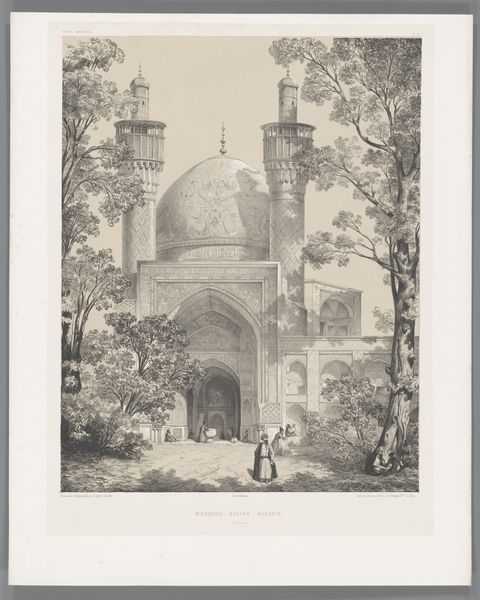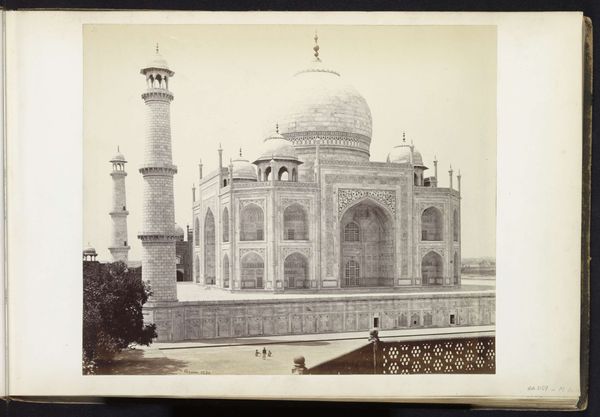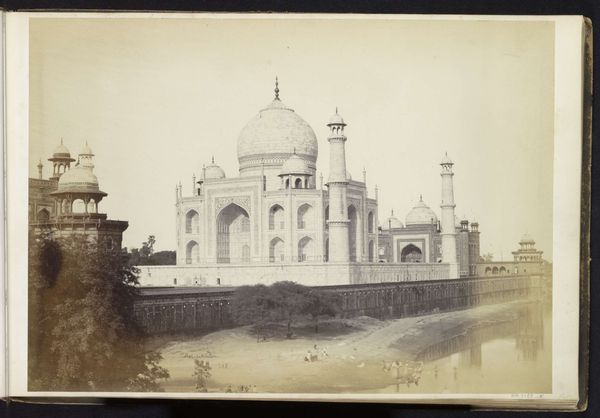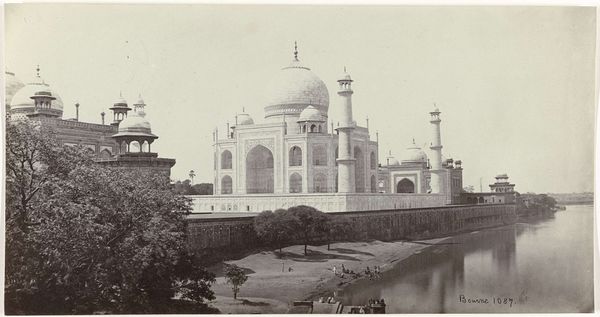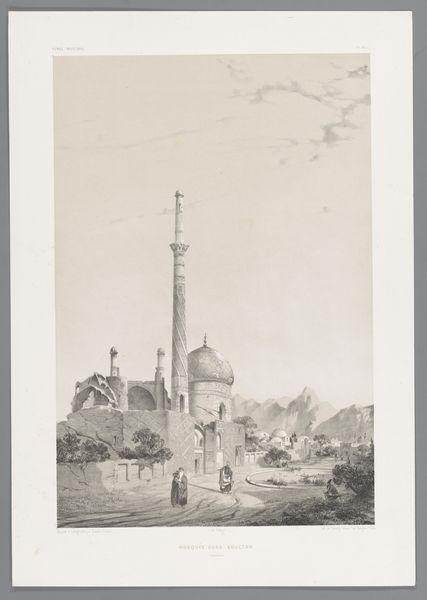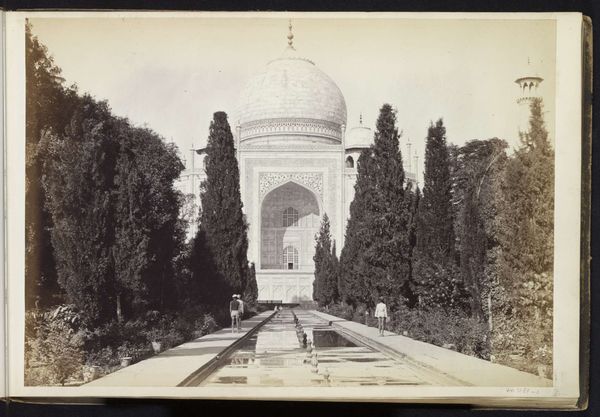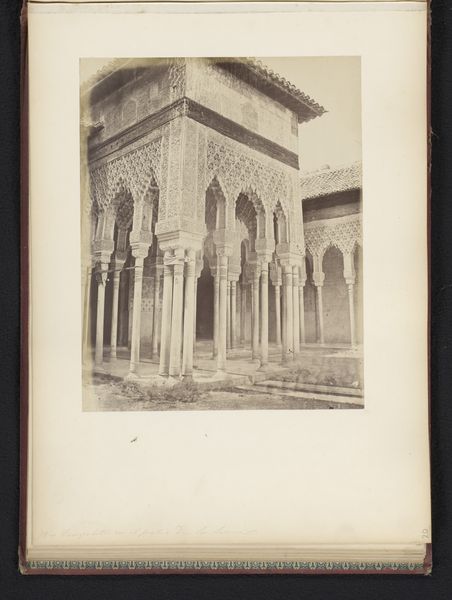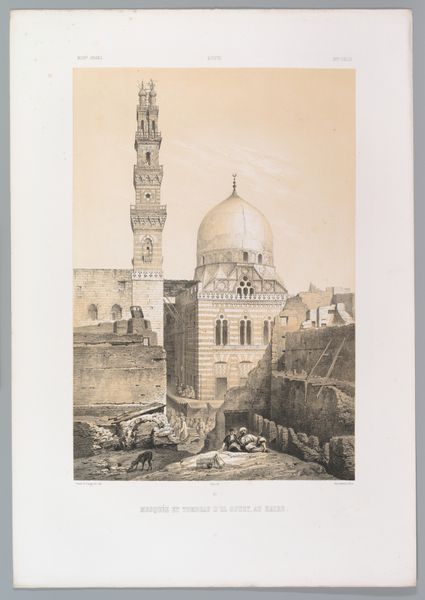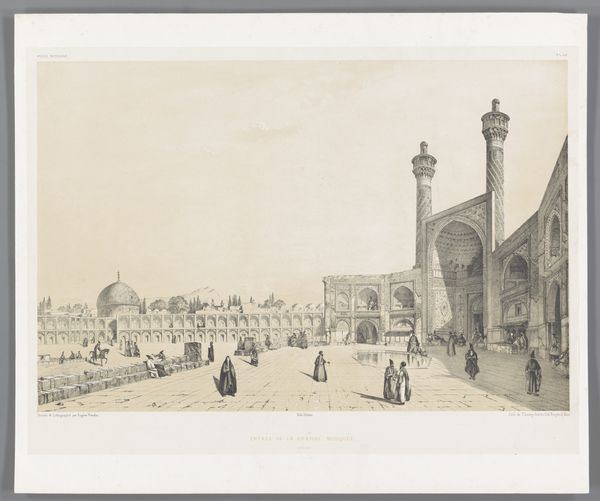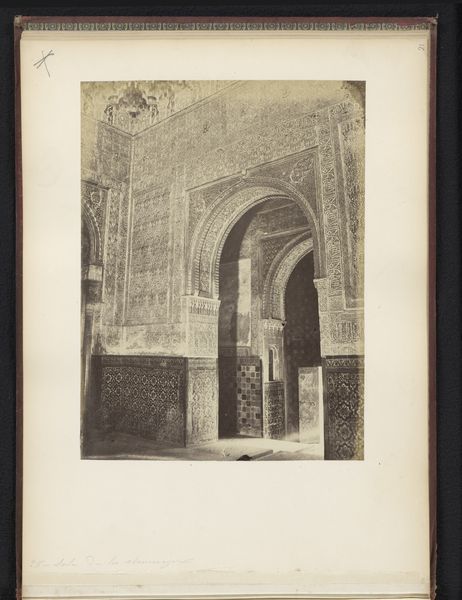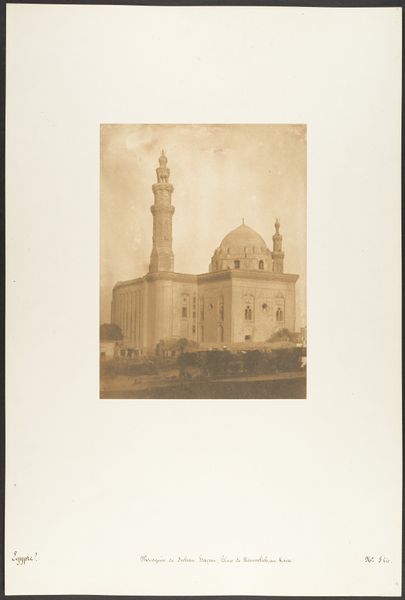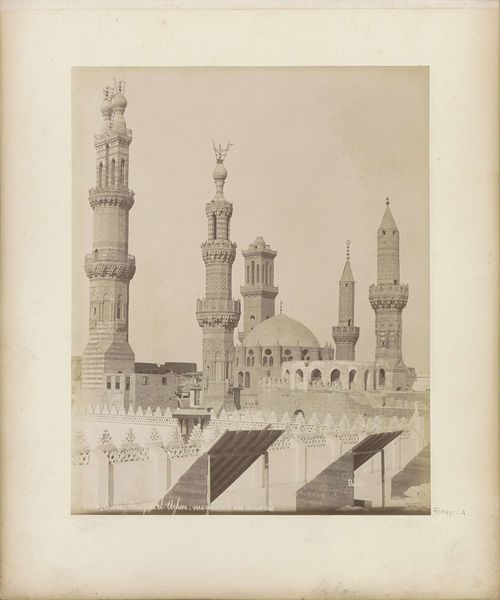
drawing, paper, ink, pencil
#
drawing
#
pencil sketch
#
landscape
#
paper
#
ink
#
pencil
#
orientalism
#
line
#
cityscape
#
academic-art
#
realism
Dimensions: height 454 mm, width 318 mm
Copyright: Rijks Museum: Open Domain
Curator: Let's turn our attention now to "Taj Mahal, Agra" by Wijnand Otto Jan Nieuwenkamp. The work, likely created between 1915 and 1919, uses ink and pencil on paper to capture the iconic monument. Editor: It’s like looking at a dream. The Taj Mahal shimmers in the background, almost fading into the sky, while the foreground feels like a secret garden. Curator: Nieuwenkamp's rendering here uses fine linework to meticulously detail both the architecture and the surrounding landscape. This echoes the prevailing artistic style that favored precision and careful observation. The material—pencil and ink—emphasizes the skill of the artist. Editor: The willow tree… it steals the show! The way the branches cascade down feels almost sorrowful, lending an unexpected melancholic mood to such an iconic image. There is a hidden depth to the setting that you don't get in a photograph. Curator: You are right about that feeling! Consider how drawings like this served not just as aesthetic objects, but as vital documentary tools. Remember photography wasn't yet the omnipresent means of capturing and circulating images, especially of faraway places. Think of the material conditions: accessing, transporting equipment, the relative ease of sketching… Editor: True! The quickness, the intimacy, a conversation the artist had with the place, now imprinted on paper. Curator: Precisely! The artwork lets us consider the colonial gaze, its power to capture, depict, and ultimately, consume other cultures. And note the frame, it draws us into the setting. Editor: For me, it underscores that feeling of being invited into someone’s personal memory. This is the Taj Mahal, yes, but it’s also Nieuwenkamp's Taj Mahal, forever caught in a web of ink, pencil, and his own unique perception. Curator: Indeed, understanding these factors allows us to consider that the image’s enduring power resides not just in the subject but in its tangible connection to place and history through this paper medium. Editor: A lovely reminder of how art transforms mere observation into something altogether more magical and layered.
Comments
No comments
Be the first to comment and join the conversation on the ultimate creative platform.
